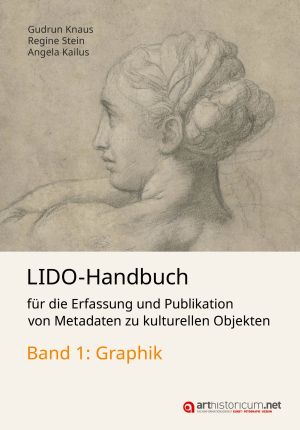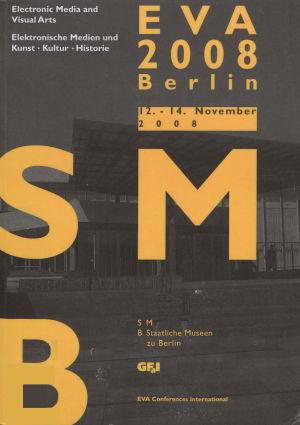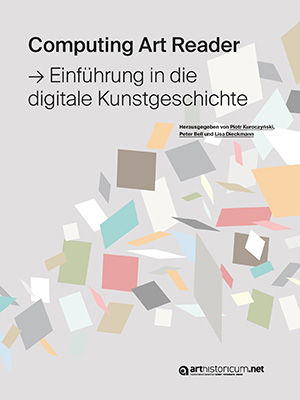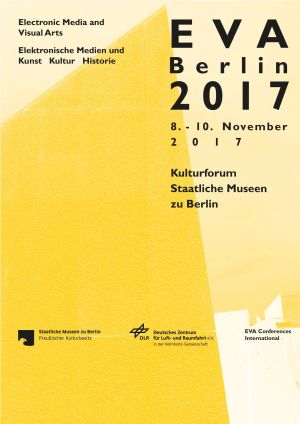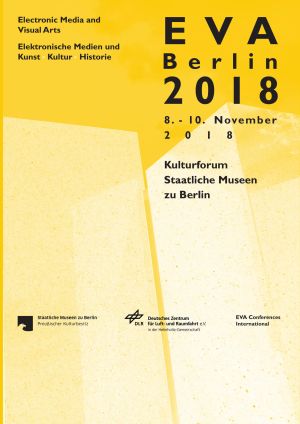Kailus, Angela
LIDO-Handbuch für die Erfassung und Publikation von Metadaten zu kulturellen Objekten: Band 2: Malerei und Skulptur
Volume 2 of the LIDO Handbook is dedicated to painting and sculpture. It describes a specific application profile of the internationally established metadata standard LIDO (Lightweight Information Describing Objects) and serves as a guide for the coherent structuring of information in local collection management systems. Each data field contains a definition, tips for data entry, examples as well as instructions for exporting data based on the LIDO XML schema. All recommendations support the objective of preparing data from different sources in ways that enable comprehensive and precise search results and open opportunities for further cross-linking and integration of information.
LIDO-Handbuch für die Erfassung und Publikation von Metadaten zu kulturellen Objekten: Band 1: Graphik
Volume 1 of the LIDO-Handbook, focusing on graphic arts, was developed in close cooperation with the members of the international network Graphik vernetzt. In order to link data from different collection systems in museums and libraries on cross-collection platforms, common standards for data content and data structure have to be applied. This practical guide lists all relevant data elements for the description of drawings and prints. Each data element contains a definition, advice for cataloguing, examples as well as additional information relevant when exporting data to the LIDO-XML format.
Elektronische Medien & Kunst, Kultur, Historie: Konferenzband EVA 2008 Berlin ; 12. - 14. November 2008 in den Staatlichen Museen zu Berlin am Kulturforum Potsdamer Platz ; die 15. Berliner Veranstaltung der internationalen EVA-Serie Electronic Imaging & the Visual Arts
Konferenzband EVA 2005 Berlin. Elektronische Bildverarbeitung & Kunst, Kultur, Historie: Die 12. Berliner Veranstaltung der internationalen EVA-Serie Electronic Imaging & the Visual Arts
Computing Art Reader: Einführung in die digitale Kunstgeschichte
Der Arbeitskreis Digitale Kunstgeschichte versteht sich als Netzwerk, das digitale Methoden im Fach Kunstgeschichte stärkt und gleichsam bildwissenschaftliche Forschung weitreichender in den Digital Humanities etabliert. Dazu richtet sich das Engagement des Arbeitskreises und seiner Mitglieder nicht nur auf die Weiterentwicklung digitaler Infrastrukturen und Werkzeuge, sondern auch auf die methodenkritische Vermittlung vielfältiger Ansätze digitaler Kunstgeschichte in der Lehre.
Der Computing Art Reader — Einführung in die digitale Kunstgeschichte stellt einen Schritt zur Umsetzung dieser Aufgaben dar. Studierende und Lehrende der Kunstgeschichte und der Digital Humanities erhalten einen ersten Überblick über die verschiedenen Inhalte und Institutionen der digitalen Kunstgeschichte; festgehalten durch einige der Akteurinnen und Akteure selbst. Die Texte bilden ein Mosaik aus theoretischen Essays, praxisnahen Projektbeschreibungen, Überblicken über Forschungszweige und kontroversen Positionstexten, in denen konkrete Technologien, aktuelle Diskurse und zukünftige Ziele des Teilgebiets ersichtlich werden.
Konferenzband EVA Berlin 2017. Elektronische Medien & Kunst, Kultur und Historie: 24. Berliner Veranstaltung der internationalen EVA-Serie Electronic Media and Visual Arts
The digital transformation of cultural heritage is a generative and co-creative process. It has long ceased to be the reproductive digitization of collection objects, but rather the imprinting of authentic experience equivalents. Telepresence technologies and three-dimensional visualizations enable a virtual re-enactment of the collections in documentation and mediation. Not as a digital twin, but as a documentary and functional enriched digital unicum, the object leaves the museum space and unfolds its own virtual, smart and shared heritage its own, auratic effectiveness in the Internet of Things, in social networks, on gaming platforms or in research and science. In addition to broader access to cultural heritage, new forms of circulation of knowledge and the differentiation of public media environments are on the digital agenda of the GLAM institutions.
The 24th Berlin EVA Conference 2017 is the forum where these topics are developed - at the interface between memory institutions, technology developers, information scientists and public administrations.
Konferenzband EVA Berlin 2016. Elektronische Medien & Kunst, Kultur und Historie: 23. Berliner Veranstaltung der internationalen EVA-Serie Electronic Media and Visual Arts
Konferenzband EVA Berlin 2018. Elektronische Medien & Kunst, Kultur und Historie: 25. Berliner Veranstaltung der internationalen EVA-Serie Electronic Media and Visual Arts
The 25th EVA Berlin Conference [Electronic Media & Visual Arts] bridges between material culture and virtual representation. The concept of «Digital Twins», transferred into the field of Cultural Heritage, is currently changing our practices of curating, scholarly documentation and communication. Digital Twins provide broader access to the collections and allow for innovative narration and visualization concepts. E-installations and streaming services give duration to the performative arts or turn music into a perfect listening experience in the digital concert hall.




